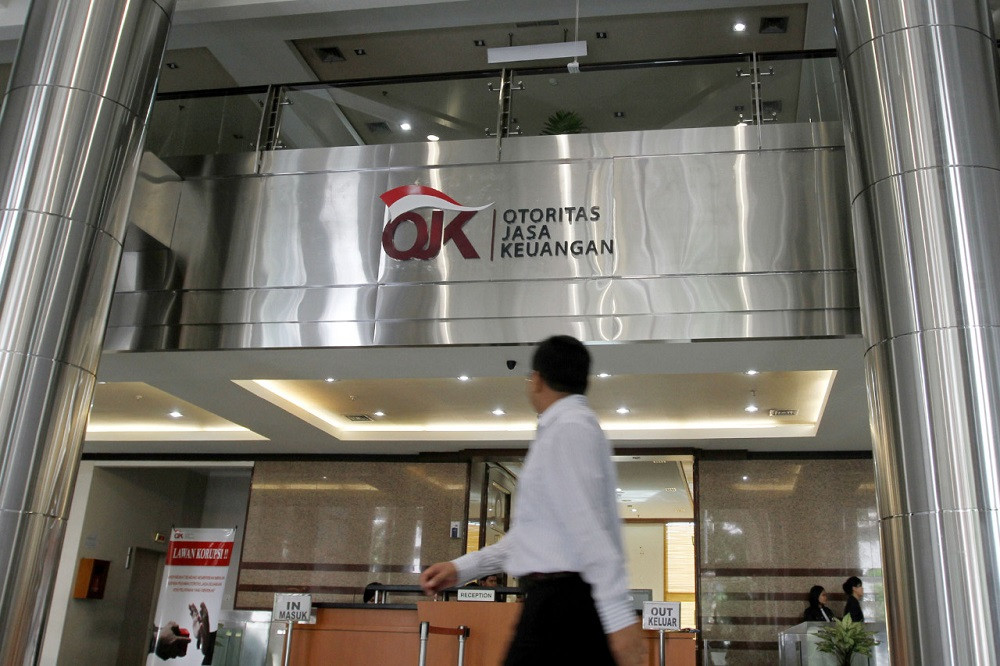Popular Reads
Top Results
Can't find what you're looking for?
View all search resultsPopular Reads
Top Results
Can't find what you're looking for?
View all search resultsLoan restructuring program extended until 2022
According to OJK data, as of Sept. 28, a total of Rp 904.3 trillion in loans to 7.5 million borrowers had been restructured.
Change text size
Gift Premium Articles
to Anyone
T
he Financial Services Authority (OJK) has announced that it will extend its loan restructuring program, issued to cushion the impact of the pandemic on the country’s borrowers and banks, until March 2022.
The OJK said it would finalize the policy extension in the form of an OJK Regulation (POJK) and would extend several other programs at the same time, including the exclusion of the loan-at-risk calculation when assessing a bank’s health.
“The extension of this restructuring program serves as an anticipatory step to provide support against the declining quality of borrowers seeking restructuring,” OJK chairman Wimboh Santoso said in a press release on Thursday.
“However, the restructuring extension policy has to be given selectively, based on the bank’s assessment, to avoid moral hazard so that borrowers still want and are able to carry out economic activities while adapting to the pandemic,” he added.
The loan restructuring program was established in March under POJK No. 11/2020 and was previously set to last until March 2021. The regulation relaxes debt quality assessments and restructuring requirements for loans worth up to Rp 10 billion (US$681,082) for borrowers affected by COVID-19.
The loans can be restructured by lowering interest rates, extending repayment periods, reducing principal or interest arrears, adding loan facilities, or converting loans into temporary equity participation schemes agreed upon by banks and their customers.
Banks are allowed to declare the restructured loans “good loans” despite their declining quality as a result of the pandemic and need not categorize them as non-performing loans (NPL) or set aside loan-loss provisions for them.
Read also: Banks ask OJK to extend debt relief program amid mounting COVID-19 cases
In an online hearing with Regional Representatives Council (DPD) Commission IV on May 11, Wimboh mentioned that it was possible that 7.8 million borrowers would apply for the loan restructuring program, amounting to Rp 1.11 quadrillion in restructured debt.
According to OJK data, as of Sept. 28, a total of Rp 904.3 trillion in loans to 7.5 million borrowers had been restructured.
State-owned Bank Mandiri corporate secretary Rully Setiawan told The Jakarta Post on Friday that while the policy had impacted the bank’s revenue and profits, it had prepared a monitoring mechanism and an action plan to ensure that the credit quality and NPL ratio were at equal levels. With the controlled loan and asset quality, he said, the bank did not need to add provisions to compensate for the impact of the policy on the bank’s income.
As of Oct. 20, Bank Mandiri had agreed to restructure Rp 119 trillion in loans to 536,000 borrowers.
“In our opinion, the number of borrowers that have yet to restructure and may need to do so when POJK No. 11 is extended will not be significant, with the assumption that the COVID-19 crisis will not be worse than it is right now,” Bank Mandiri managing director and chief risk officer Siddik Badruddin said during a public meeting on Monday.
The bank, he added, was considering whether to extend the restructuring period for borrowers who had already restructured.
However, he said there was “no use in further restructuring” of loans to the highest-risk borrowers, who were not expected to be able to recover from the pandemic. They accounted for 10 to 11 percent of the restructured borrowers.
“[The extension] is a good step, and it needs to be done,” Paul Sutaryono, banking observer and former assistant vice president of Bank Negara Indonesia (BNI), told The Jakarta Post on Friday.
He said a year-long extension was sufficient to support the real sector, which had yet to recover, but acknowledged that full recovery by 2022 was not guaranteed.
“Of course banks will be pressured because the revenue from loan interest will deplete significantly. As a result, profit will thin out,” Paul said.
However, he added, Indonesian banks would still be attractive to foreign investors despite the decline in profitability.
From April to August, the Indonesian banking industry’s net interest margin (NIM) fell by 0.14 percentage points from 4.57 percent to 4.43 percent, OJK data shows. The margin is an indicator of banks’ profitability and growth.
The NPL rate was 3.15 percent in September, down from 3.22 percent in August but well above the 2.66 percent booked in September 2019.
Paul noted that although NPL rate remained below the threshold of 5 percent, it served as a reminder to banks to improve the quality of loans.










